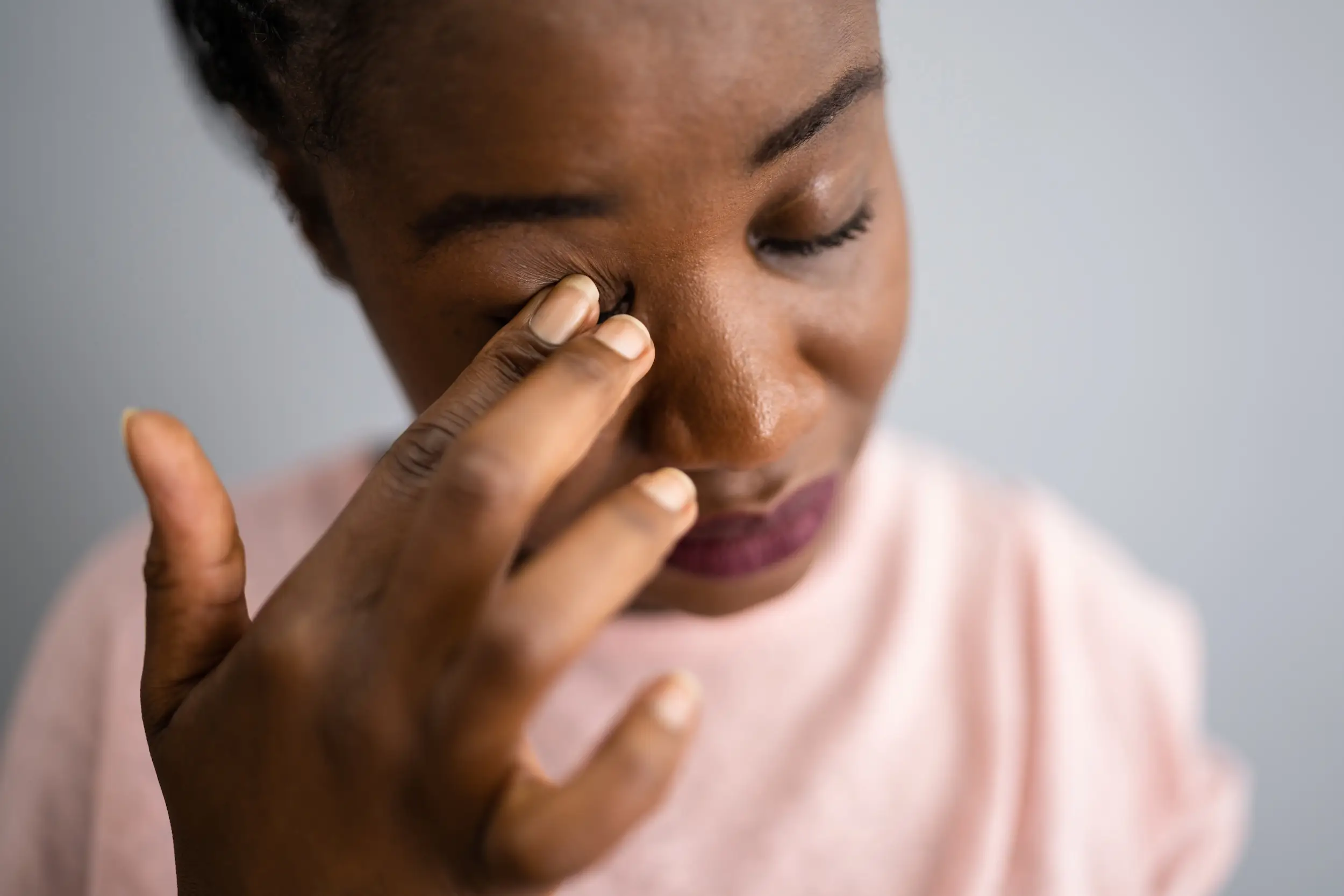Contents
- 1 Understanding Different Types of Eye Emergencies
- 2 Common Causes of Eye Emergencies
- 3 Signs and Symptoms of an Eye Emergency
- 4 Immediate First Aid for Eye Emergencies
- 5 When to Seek Professional Help
- 6 Preventing Eye Emergencies: Tips for Everyday Eye Safety
- 7 Creating an Eye Emergency Kit: What You Should Include
- 8 Caring for Eye Injuries: Do’s and Don’ts
- 9 Understanding the Role of an Eye Care Professional
- 10 Conclusion: Ensuring Eye Emergency Preparedness
Eye Care Emergency – When it comes to our overall well-being, our eyes play a crucial role in our daily lives. However, accidents happen, and sometimes we find ourselves in need of immediate eye care. Whether it’s a foreign object lodged in the eye, sudden vision loss, or a chemical burn, knowing how to handle these eye emergencies can make all the difference in preventing further damage and ensuring a swift recovery. In this article, we will provide expert tips and guidance on how to effectively manage eye emergencies, ensuring the safety and well-being of your eyes. Let’s dive in!
Understanding Different Types of Eye Emergencies
In the world of eye care, emergencies can come in various forms, each requiring different levels of attention and care. By understanding the different types of eye emergencies, you can quickly identify the severity of the situation and take appropriate action.
1. Foreign Objects in the Eye
One of the most common types of eye emergencies is having a foreign object in the eye. This could be anything from a small speck of dust to a metal shard. Symptoms may include irritation, redness, excessive tearing, or a feeling that something is stuck in the eye. It’s essential to avoid rubbing the eye as it can worsen the situation.
2. Eye Infections
Eye infections, such as conjunctivitis (pink eye), can cause significant discomfort and require immediate attention. Symptoms may include redness, itching, discharge, and blurred vision. Infections can be highly contagious, so it’s crucial to avoid touching or rubbing the affected eye and maintain good hygiene practices.
3. Chemical Burns
Chemical burns to the eye can occur when the eye comes into contact with irritants like cleaning products or acids. Symptoms can range from mild irritation to severe pain, redness, blurred vision, and even vision loss. It’s crucial to flush the eye immediately with clean water and seek professional help without delay.
4. Corneal Abrasions
A corneal abrasion refers to a scratch or scrape on the cornea, the clear front surface of the eye. It can occur due to a foreign object, like a fingernail or contact lens, or from excessive rubbing of the eye. Symptoms include pain, redness, tearing, sensitivity to light, and blurred vision. Medical evaluation is essential to prevent infection and aid in healing.
5. Eye Trauma
Eye trauma can result from accidents, sports injuries, or direct blows to the eye. It can range from minor bruises to more severe conditions like a detached retina or orbital fracture. Symptoms may include pain, swelling, bruising, double vision, or difficulty seeing. Immediate medical attention is necessary to assess the extent of the injury and prevent complications.
By being aware of these different types of eye emergencies and their symptoms, you can take the necessary steps to address the situation appropriately. Remember, it’s always best to seek professional help if you’re unsure about the severity of an eye emergency. Next, we’ll discuss the common causes of eye emergencies to help you minimize the risks.
Common Causes of Eye Emergencies
Eye emergencies can arise from various situations and activities that pose a risk to our delicate eyes. Understanding the common causes of these emergencies can help you take preventive measures and protect your eyes.
1. Sports and Recreational Activities
Engaging in sports and recreational activities can put your eyes at risk due to potential impact or exposure to hazardous objects. High-contact sports like boxing or basketball, as well as activities like swimming or skiing, can lead to eye injuries if proper protective gear, such as goggles or helmets, is not worn.
2. Workplace Hazards
Workplaces, especially in certain industries like construction or manufacturing, can expose employees to eye hazards. Flying debris, chemicals, sparks, or intense light sources can cause significant eye injuries. Employers should provide appropriate safety equipment, including safety glasses or face shields, and promote proper safety protocols.
3. Home Accidents
Accidents at home can unexpectedly lead to eye emergencies. Common scenarios include mishandling sharp objects or tools, using cleaning products without protective eyewear, or getting hit by projectiles during DIY projects. It’s important to maintain awareness and take precautions to prevent such accidents.
4. Chemical Exposure
Exposure to harmful chemicals, whether at home or in the workplace, can result in eye emergencies like chemical burns or chemical conjunctivitis. It’s crucial to handle chemicals cautiously, wear appropriate protective eyewear, and follow safety guidelines provided by manufacturers.
5. Foreign Objects
Foreign objects, such as small particles, wood chips, or metal fragments, can accidentally enter the eye and cause irritation or injury. These can be encountered during various activities like gardening, woodworking, or even during windy conditions outdoors. Wearing protective eyewear can significantly reduce the risk of foreign objects entering the eye.
Understanding the common causes of eye emergencies can help you anticipate potential risks and take proactive measures to protect your eyes. In the next section, we will dive into the signs and symptoms of an eye emergency, allowing you to identify when immediate attention is needed.
Signs and Symptoms of an Eye Emergency
Recognizing the signs and symptoms of an eye emergency is crucial for prompt intervention and appropriate medical care. Here are some common indicators that should raise concern:
1. Severe Eye Pain
If you experience sudden and intense eye pain that persists or worsens over time, it could be a sign of an underlying eye emergency. The pain may be accompanied by redness, swelling, or blurred vision.
2. Sudden Vision Changes
Any sudden changes in your vision, such as double vision, blurred vision, or loss of vision in one or both eyes, should never be ignored. These symptoms can indicate various eye emergencies, including retinal detachment or ocular trauma.
3. Excessive Tearing or Discharge
If you notice a sudden increase in tearing or a thick discharge from your eyes, it may be a sign of an infection or another eye emergency. Pay attention to the consistency, color, and odor of the discharge, as it can provide valuable clues to the underlying cause.
4. Eye Redness and Irritation
Redness and irritation in the eyes can be caused by various factors, including allergies, dryness, or conjunctivitis. However, if the redness is severe, persistent, or accompanied by pain and vision changes, it may indicate a more serious eye emergency.
5. Presence of a Foreign Object
If you feel like there is something in your eye or notice a foreign object on the surface of your eye, it is important not to rub or touch it. Attempting to remove the object yourself can potentially worsen the situation or cause additional damage.
It is important to note that these symptoms are not exhaustive, and any unusual or concerning changes in your eyes or vision should be taken seriously. When in doubt, it is always best to seek immediate medical attention to ensure proper diagnosis and timely treatment. In the next section, we will discuss the essential first aid measures you can take in case of an eye emergency.
Immediate First Aid for Eye Emergencies
Knowing how to administer first aid for common eye emergencies can make a significant difference in preventing further damage and promoting the well-being of your eyes. Here are some essential steps to take:
1. Flushing the Eye
If a foreign object is stuck in the eye, it’s crucial to flush it out to reduce the risk of damage. Tilt your head sideways, with the affected eye facing down, and gently pour clean, lukewarm water into the inner corner of the eye. Let the water flow across the eye to help dislodge the object. Avoid using forceful streams of water or any chemicals unless specifically instructed by a medical professional.
2. Removing a Foreign Object
If a foreign object, such as an eyelash or dirt, is visible on the surface of the eye or under the eyelid, you can attempt to remove it with clean, moistened cotton swabs or the corner of a clean cloth. Gently lift the upper or lower eyelid and touch the foreign object with care. If unable to remove the object or if it is embedded in the eye, do not force it out and seek immediate medical attention.
3. Applying a Cold Compress
A cold compress can help reduce swelling and alleviate pain in certain eye emergencies, such as minor injuries or eye allergies. Place a clean, cold compress or a bag of ice wrapped in a clean cloth over the affected eye for short intervals, ensuring not to apply direct pressure. Be cautious not to use excessively cold temperatures, as it can damage the delicate tissues of the eye.
4. Avoiding Rubbing or Touching
When faced with an eye emergency, it’s essential to resist the urge to rub or touch the affected eye. Rubbing can exacerbate the injury, increase the risk of infection, or embed foreign objects further into the eye. Instead, keep the eye protected and seek medical attention as soon as possible.
5. Seeking Immediate Medical Help
While first aid measures can provide initial relief, it’s crucial to seek professional medical help for more serious eye emergencies, such as chemical burns, severe injuries, or sudden vision loss. Only an eye care specialist can properly assess the situation, provide the necessary treatment, and ensure the best possible outcome.
Remember, the above steps are general guidelines and may vary depending on the specific eye emergency. It’s always advisable to consult with a healthcare professional or call emergency services for personalized advice in critical situations. In the next section, we will discuss when to seek professional help for eye emergencies.
When to Seek Professional Help
While some eye emergencies can be managed with immediate first aid measures, it is crucial to recognize the situations that require professional medical attention. Seeking prompt help from an eye care specialist ensures proper diagnosis, treatment, and prevention of potential complications.
1. Severe Pain or Discomfort
If you experience severe or persistent eye pain that is not relieved by over-the-counter pain relievers, it is essential to seek professional help. Severe pain can be indicative of serious conditions such as corneal ulcers, glaucoma, or uveitis that require medical intervention.
2. Sudden Vision Loss
Any sudden and significant loss of vision should never be ignored. It could be a sign of a retinal detachment, a blockage in the blood vessels of the eye, or other serious eye conditions. Immediate evaluation by an eye care professional is crucial to prevent permanent vision loss.
3. Chemical Burns or Exposure
If your eye comes into contact with chemicals, whether at home or in the workplace, it is imperative to seek immediate medical attention. Chemical burns can cause severe damage to the eye and surrounding tissues, potentially leading to vision loss if not treated promptly and appropriately.
4. Foreign Objects that Cannot be Removed
If you have a foreign object lodged in your eye that you are unable to remove or if you suspect a penetrating eye injury, do not attempt to remove it yourself. Seeking professional help is essential to avoid further damage, potential infection, or complications that may arise from improper removal.
5. Eye Trauma or Injury
Any significant eye trauma or injury, such as a blunt force impact, a cut, or a penetrating injury, warrants immediate medical attention. Delaying treatment can lead to complications, including infection, vision loss, or long-term damage to the eye structures.
Remember, the above situations are general guidelines, and it’s always better to err on the side of caution when it comes to your eye health. If you are unsure whether your situation constitutes an emergency, contact an eye care professional or visit the nearest emergency room for guidance. In the next section, we will discuss practical tips for preventing eye emergencies in various settings.
Preventing Eye Emergencies: Tips for Everyday Eye Safety
While accidents can happen unexpectedly, there are several proactive steps you can take to minimize the risk of eye emergencies. By incorporating these everyday eye safety practices into your routine, you can help protect your eyes from potential harm.
1. Wear Protective Eyewear
Whether you’re engaged in sports, working with tools, or participating in activities that pose risks to the eyes, always wear appropriate protective eyewear. Safety goggles, face shields, or helmets with visors can provide a barrier of protection against flying debris, chemicals, or other hazardous substances.
2. Practice Good Hygiene
Keeping your hands and face clean is essential for preventing eye infections and reducing the risk of contamination. Wash your hands thoroughly with soap and water before touching your eyes or handling contact lenses. Avoid touching or rubbing your eyes unnecessarily, as it can introduce bacteria or irritants.
3. Follow Safety Guidelines
Whether at work, home, or participating in recreational activities, always adhere to safety guidelines and protocols. This includes using appropriate personal protective equipment, following proper handling and storage procedures for chemicals, and ensuring a safe environment free from potential hazards.
4. Take Breaks from Digital Screens
Extended periods of screen time can lead to eye strain and discomfort. To prevent digital eye strain, follow the 20-20-20 rule: every 20 minutes, look away from your screen and focus on an object at least 20 feet away for 20 seconds. Additionally, adjust your screen settings to reduce glare and consider using artificial tears to lubricate your eyes.
5. Protect Your Eyes from UV Rays
Exposure to ultraviolet (UV) rays can increase the risk of eye conditions like cataracts and macular degeneration. When spending time outdoors, wear sunglasses that provide 100% UV protection and a wide-brimmed hat to shield your eyes from direct sunlight.
6. Maintain Regular Eye Exams
Scheduling regular eye exams with an eye care professional is vital for maintaining optimal eye health. Comprehensive eye exams can detect early signs of potential issues and ensure timely intervention. Follow your eye care professional’s recommended schedule for routine exams based on your age, family history, and any existing eye conditions.
By adopting these eye safety practices and making them part of your daily routine, you can significantly reduce the risk of eye emergencies and promote long-term eye health. In the next section, we will guide you on creating an eye emergency kit that can come in handy during critical situations.
Creating an Eye Emergency Kit: What You Should Include
Having an eye emergency kit readily available can be invaluable during critical situations. It allows you to administer immediate first aid and provide temporary relief before seeking professional medical help. Here are some essential items to include in your eye emergency kit:
1. Sterile Eye Wash Solution
A sterile eye wash solution or saline solution is crucial for flushing out foreign objects, chemicals, or irritants that may enter the eye. Make sure to choose a product specifically formulated for eye irrigation and check the expiration date regularly.
2. Eye Drops or Artificial Tears
Eye drops or artificial tears can provide temporary relief from dryness, irritation, or discomfort. Look for preservative-free options that are suitable for sensitive eyes. These can be particularly helpful for minor irritations or mild allergic reactions.
3. Eye Patches or Shields
Eye patches or shields can help protect the eye and prevent further injury in certain situations, such as corneal abrasions or after eye surgery. Ensure that the patches or shields are sterile, adhesive enough to stay in place, and designed specifically for ocular use.
4. Sterile Eye Dressings or Gauze Pads
Sterile eye dressings or gauze pads can be used to cover and protect the eye in case of trauma or injury. These should be individually wrapped and sterile to prevent contamination. Avoid putting pressure on the eye when applying dressings or pads.
5. Contact Lens Supplies
If you wear contact lenses, it’s wise to include a spare pair of lenses, lens cases, and contact lens solution in your eye emergency kit. This ensures that you can safely remove and store your lenses if necessary, especially in situations involving eye irritations or injuries.
6. Emergency Contact Information
Keep a list of emergency contact numbers, including your eye care professional’s phone number, nearby hospitals, and emergency services, readily accessible. This ensures that you can quickly reach out for professional guidance or assistance during an eye emergency.
Store your eye emergency kit in a cool, dry place that is easily accessible. Regularly check the contents of the kit and replace any expired or used items to ensure their effectiveness when needed. Remember, while an eye emergency kit can be helpful, it is not a substitute for professional medical care. Seeking immediate professional help is always recommended in serious eye emergencies. In the next section, we will discuss the do’s and don’ts of caring for specific eye injuries.
Caring for Eye Injuries: Do’s and Don’ts
Knowing how to properly care for specific eye injuries can make a significant difference in promoting healing and preventing complications. Here are some do’s and don’ts to keep in mind when faced with common eye injuries:
1. Do Rinse a Chemical Burn Immediately
If a chemical comes into contact with your eye, rinse it immediately with clean, lukewarm water for at least 15 minutes. Hold your eye open while flushing to ensure thorough irrigation. Avoid using any other substances, such as eye drops, unless specifically directed by a medical professional.
2. Don’t Rub or Apply Pressure
Resist the temptation to rub or apply pressure to your injured eye, as it can worsen the injury or introduce infection. Instead, keep the eye protected and avoid touching it until you can seek professional help.
3. Do Cover a Cut or Puncture Wound
If you have a cut or puncture wound near your eye, cover it with a clean, sterile dressing or gauze pad. Avoid putting pressure on the wound and seek immediate medical attention to assess the extent of the injury and prevent infection.
4. Don’t Attempt to Remove a Foreign Object Embedded in the Eye
If a foreign object is embedded in your eye, it is crucial not to try and remove it yourself. Attempting to do so may cause further damage. Instead, seek immediate professional help to safely remove the object and minimize the risk of complications.
5. Do Apply a Cold Compress for Swelling or Bruising
If you experience swelling or bruising around the eye due to trauma, applying a cold compress or a bag of ice wrapped in a clean cloth can help reduce inflammation. Place the compress gently on the affected area for short intervals, ensuring not to apply direct pressure.
6. Don’t Delay Medical Attention
For any severe eye injury, it is essential to seek immediate medical attention. Delaying treatment can lead to complications or permanent vision loss. Contact an eye care professional, visit the nearest emergency room, or call emergency services as soon as possible.
Remember, these guidelines are general recommendations and may vary depending on the specific injury. It is always best to consult with a medical professional for personalized advice and treatment. In the next section, we will discuss the different eye care professionals and their roles in managing eye emergencies.
Understanding the Role of an Eye Care Professional
When faced with an eye emergency, seeking help from the right eye care professional is crucial for proper diagnosis, treatment, and management. Let’s explore the different types of professionals and their roles in handling eye emergencies:
1. Optometrist
An optometrist is a primary eye care provider who specializes in comprehensive eye examinations, vision testing, and prescribing corrective lenses. In the context of eye emergencies, optometrists can assess and manage minor injuries, infections, or irritations. They can also provide necessary referrals to other specialists, if required.
2. Ophthalmologist
An ophthalmologist is a medical doctor who specializes in eye care and surgery. They have extensive training and can diagnose and treat a wide range of eye conditions, including severe eye injuries, infections, glaucoma, retinal disorders, and more. Ophthalmologists are equipped to handle complex eye emergencies and can perform surgical procedures, if necessary.
3. Emergency Room Physician
In critical situations, visiting the emergency room (ER) may be necessary. Emergency room physicians have general medical knowledge and can provide initial evaluation and stabilization for eye emergencies. They can assess the severity of the situation and determine if you need to be referred to an ophthalmologist or other specialists for further care.
4. Urgent Care Center
Urgent care centers can be an option for non-life-threatening eye emergencies that require immediate attention outside regular office hours. They are staffed with medical professionals who can evaluate and treat various urgent medical conditions, including eye injuries, infections, or acute vision problems.
5. Pediatric Ophthalmologist
For children experiencing eye emergencies, a pediatric ophthalmologist specializes in diagnosing and treating eye conditions in infants, children, and adolescents. They have expertise in managing pediatric-specific eye emergencies, such as eye infections, injuries, and vision problems.
Choosing the right eye care professional depends on the severity and nature of the eye emergency. In case of doubt, contact your local eye care professional’s office or the nearest emergency department for guidance. In the concluding section of this article, we will summarize the key points discussed and emphasize the importance of eye emergency preparedness.
Conclusion: Ensuring Eye Emergency Preparedness
When it comes to eye emergencies, being prepared and knowledgeable can make all the difference in protecting your precious vision. Here are the key points to remember:
1. Understand Different Types of Eye Emergencies
Familiarize yourself with the various types of eye emergencies, including foreign objects, infections, chemical burns, corneal abrasions, and eye trauma. Knowing the signs and symptoms can help you identify when immediate action is needed.
2. Administer Immediate First Aid
Learn and practice appropriate first aid measures for common eye emergencies, such as flushing the eye, removing foreign objects, applying cold compresses, and avoiding rubbing or touching the eye.
3. Seek Professional Help When Necessary
Recognize when it’s time to seek professional medical help. Severe pain, sudden vision changes, chemical burns, foreign objects that cannot be removed, or eye trauma all require immediate attention from an eye care specialist or emergency room.
4. Take Preventive Measures
Prevent eye emergencies by wearing appropriate protective eyewear during sports and recreational activities, following safety guidelines at work and home, practicing good hygiene, and minimizing exposure to harmful UV rays.
5. Create an Eye Emergency Kit
Assemble an eye emergency kit that includes essentials like sterile eye wash solution, eye drops, eye patches, contact lens supplies, and emergency contact information. Regularly check and replenish the kit as needed.
6. Consult the Right Eye Care Professional
Understand the roles of different eye care professionals, such as optometrists, ophthalmologists, pediatric ophthalmologists, emergency room physicians, and urgent care centers. Seek appropriate professional help based on the severity of the eye emergency.
Remember, the information provided in this article is for informational purposes only and should not replace professional medical advice. If you or someone else experiences an eye emergency, always consult a qualified eye care professional for proper evaluation and treatment.
By staying informed, prepared, and proactive, you can safeguard your eyes and ensure prompt and proper care during unexpected eye emergencies. Stay safe, protect your vision, and prioritize your eye health. For more informative articles on maintaining optimal eye care, stay tuned to our blog.
In conclusion, when it comes to eye emergencies, being prepared and informed is crucial. Understanding the different types of eye emergencies, recognizing the signs and symptoms, and knowing how to administer immediate first aid can make a significant difference in protecting your vision. It’s important to seek professional help when necessary and take preventive measures to minimize the risk of eye emergencies. Creating an eye emergency kit with essential supplies and knowing when to consult the right eye care professional are vital for prompt and appropriate care. Remember, always prioritize your eye health and consult a qualified eye care professional for personalized advice and treatment. Stay informed, stay prepared, and safeguard your precious vision. For more insightful articles on maintaining optimal eye care, keep following our blog.

Passionate about preserving lives and protecting properties, John Sarver is a dedicated advocate for fire safety. With an unwavering commitment to educating and empowering communities, he has become a prominent voice in the field. As the founder and author of the influential blog “SarverFire,” John’s mission is to share invaluable insights, tips, and resources to enhance fire safety awareness and preparedness.





